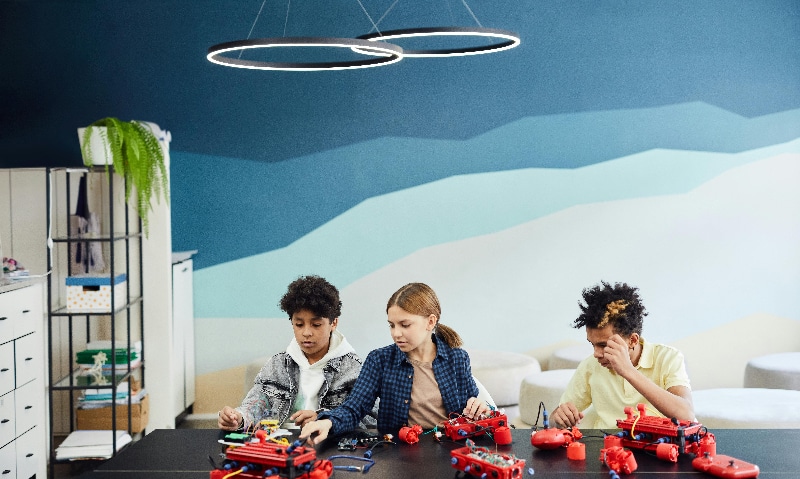In past videos, I’ve made the bold claim that schools can’t transform themselves. But to be more clear on this point, let’s dive deeper. In this video, I’m going to distinguish between what schools can truly change, and what remains beyond their reach.
A school’s capabilities come from three things: resources, processes, and priorities. All change involves rethinking one or more of these elements.
First up, resources are things like buildings, furniture, curriculum, technology, and staff. Resources are easiest to change because they can be bought and sold, hired and fired.
Next, processes include things like how teachers plan their lessons and manage their classrooms, how central offices set schedules and adopt curriculum, and how schools communicate with families. Processes are stickier than resources because they have to be learned and unlearned.
Finally, priorities are the decision-making criteria that people across a school internalize as they do their jobs. They are the rules or standards that emerge as a school wrestles with issues like how to keep students enrolled and engaged, keep staff invested in their jobs, improve test scores, balance budgets, avoid lawsuits, and keep state regulators happy. Priorities reflect the things a school must do to maintain support and keep its doors open.
So what do these three things tell us about transforming schools?
If a change involves straightforward improvements to existing resources and processes, it will happen organically—driven by the culture of the school.
If a change requires overhauling existing resources and processes, things get more difficult. But change is still feasible as long as it aligns with the school’s priorities. In fact, great leaders are people who can rally others around a vision, then help people change resources and processes to better fulfill shared priorities.
But what if a change involves all three of these elements—in other words, a dramatic revamp of resources, and processes, AND priorities? In other words, what if transformation means changing some of the basic assumptions about what school should be—like the idea that learning happens primarily at school buildings in classrooms, that students progress through content together on semester-based calendars, and that teacher instruction is what drives learning. A transformation that challenges these or other basic assumptions about the purpose and nature of schooling will clash with the internalized priorities of most established schools.
This is why transformations that entail resources, processes, and priorities are impossible to bring about from within most established schools. Staff drag their feet, parents protest, and state agencies pull out their red tape. And a leader that tries to drive will (most likely) lose their job.
I’ll say that again: If transformation requires NEW priorities, it cannot happen within an already-established school. You can’t get there by creating a vision, building buy-in or mobilizing action. New priorities require a fresh start. You have to find or create a context that shares the priorities you are aiming for. You have to start with a new value network.
If you like insights on the future of education, follow for more.



